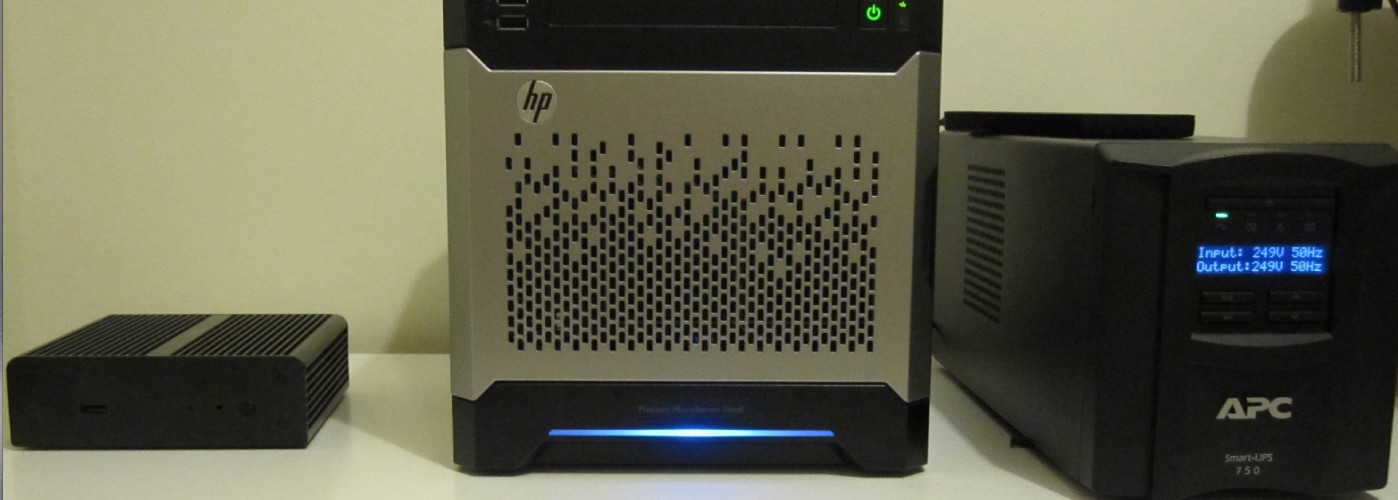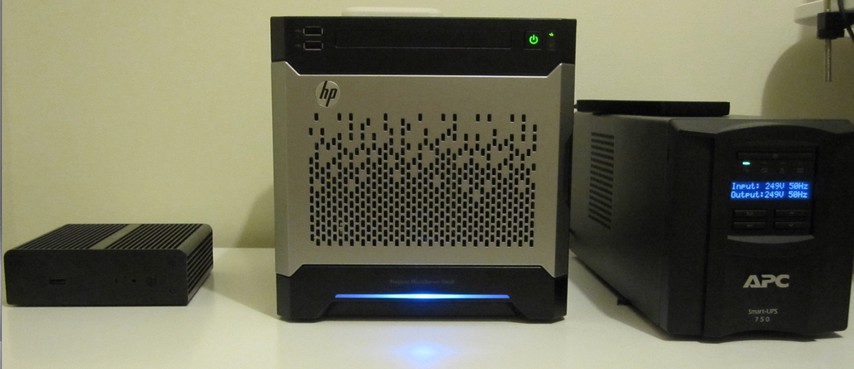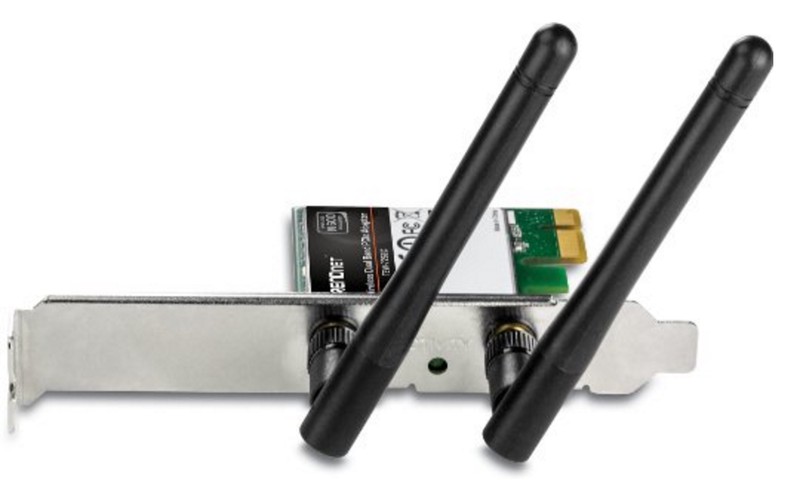
HomePlug AV network failover
My home network is reasonably fault tolerant; the main router is on UPS, as is my HP MicroServer running ubuntu. I use 2 HomePlugAV 500 network adapters for a reliable connection (compared to WiFi) between the server and the router as they are on different floors.

A few weeks ago a woke up to my external house lights blinking regularly which was confusing. Some lights were on, some were dim, and most were making a sizzling noise. It turns out we had a brownout – the mains voltage went down to an intermittent 60V for about 3 hours which some power supplies could deal with, others could not. Nonetheless, both UPSes kicked in but the HomePlug network went offline.

I knew it was possible to bond 2 or more (homogeneous?) network connections for speed and/or redundancy; but what about ethernet with WiFi? It turns out a few people have done this but for the purpose of docking a laptop. I ordered a Dual-Band Atheros based low-profile PCI-E 802.11n which was surprisingly uncommon; the market is flooded with binary-blob1 powered Broadcom 802.11ac cards.
Anyway, I had no luck with most configurations; I eventually used the example configuration 2 from the Debian website. Here’s my /etc/network/interfaces config:
auto em1
iface em1 inet manual
bond-master bond0
bond-primary em1
bond-mode active-backup
#pre-up ifconfig $IFACE up
#post-down ifconfig $IFACE down
auto wlan0
iface wlan0 inet manual
wpa-ssid BTHub-2211
wpa-psk goatsareinteresting
bond-master bond0
bond-primary em1
bond-mode active-backup
#pre-up ifconfig $IFACE up
#post-down ifconfig $IFACE down
## Request dhcp ip for bonded interface
#iface bond0 inet dhcp
auto bond0
iface bond0 inet static
address 192.168.1.105
netmask 255.255.255.0
gateway 192.168.1.254
dns-nameservers 192.168.1.254
bond-slaves none
bond-primary em1
bond-mode active-backup
bond-miimon 100Oddly, the bond- options have to be specified 3 times each or it doesn’t work. I suspect it works around a chicken-and-egg condition or something. The bonding configuration is set to active-backup which means all traffic goes through the ethernet interface until that fails, at which point the WiFi interface takes over; this way the traffic always uses the best-available route. In case you were wondering, bond0 assumes the MAC address of the Ethernet interface, as does the WiFi card so ARP tables won’t be invalidated (nor will sessions be dropped) on failover.
The result is a much more fault-tolerant connection which is important as I use the server to log events from my home automation system (which is also power-failure tolerant) more on that later. SSH sessions can even persist with a slight interruption.
Still? I thought Broadcom open sourced their WiFi drivers. ↩︎
Tags:
Thanks for reading! If you have comments or like this article, please post or upvote it on Hacker news, Twitter, Hackaday, Lobste.rs, Reddit and/or LinkedIn.
Please email me with any corrections or feedback.